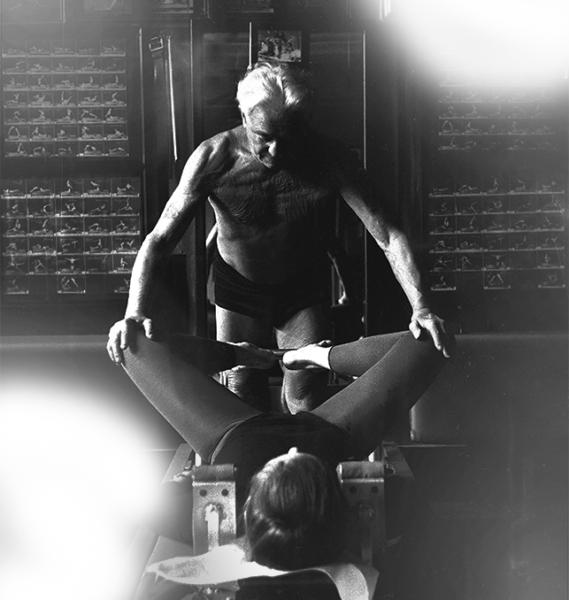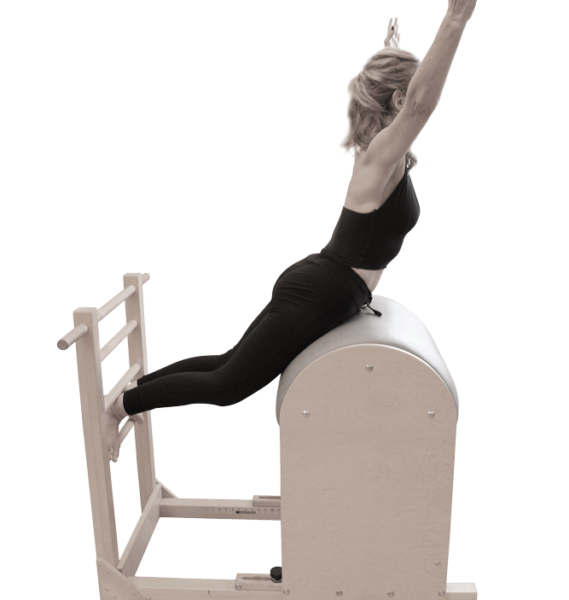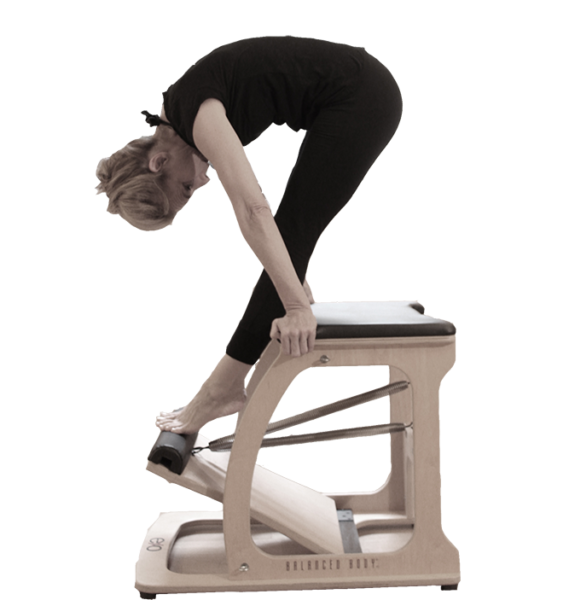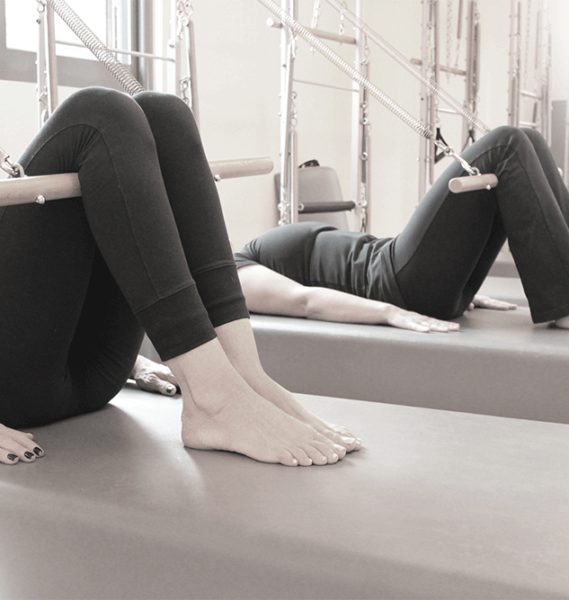-
A bit of History
• Joseph was a sickly child, suffering from rickets, rheumatic fever, and asthma. He would study anatomy books and lie in the woods for hours, hiding and watching the animals move. He concluded that, “normal muscles should function naturally in much the same manner as muscles of animals.”
• Joseph Pilates started to develop his exercise method while serving in hospitals during the first world war, adapting hospital beds with pulleys, straps and springs to help bedridden patients regain strength and muscle control. This was his prototype for the equipment we now use, the Cadillac and the Reformer.
• He created a series of exercises he called “Contrology” designed to use the mind to control the body.
• He devised equipment to support muscles through resistance to help rehabilitate sick and injured patients.
• In his book Return to Life, Pilates said his program “develops not only the muscles of the body, suppleness of the limbs and functioning of vital organs and endocrine glands, it also clarifies the mind and develops the will.”
• In 1926, Pilates moved to New York City where he, along with his wife Clara, opened his studio. Early adopters of the Pilates Method came from the entertainment industry including the New York City Ballet’s George Balanchine and the famous Martha Graham.
• After his death in 1967, the work of Joseph Pilates has continued to have a strong and devoted following. The legacy of his work has been kept alive by Romana Kryzanowska, master teacher and protégé of Joseph Pilates, along with other first generation master teachers and the Pilates community that they have trained and certified over the years.
• The approach called “Classical Pilates” came from those that committed themselves to passing along Joe’s work exactly as he taught it.
-
pilates is:
• A FULL BODY exercise system which trains the mind and body to work together toward the goal of overall fitness and optimal alignment.
• A METHOD that has over 500 different exercises which can be performed on five unique pieces of apparatus. The exercises are done in a particular sequence, with a minimum number of repetitions and a high level of precision and mental focus.
• INCREASINGLY AEROBIC in nature and much more challenging, as the student progresses
• DESIGNED to stretch, strengthen, and balance the body. Pilates strengthens all the muscle groups, but particularly the deep “core muscles” which are so important to both our posture and our overall health and well being.
• THE BACKBONE to any healthy and active workout, from cycling and rowing to intense weightlifting and strenuous trending classes
• FOR EVERYONE interested in improving the way they look, feel and move,for those whose work demands too much sitting; to those who sit too little.For athletes, busy mums, stressed out executives with bad backs, people with acute injuries and chronic pain, and expectant mothers.
-
benefits:
• Maximizes strength and endurance
• Deep awareness of efficient body movement and muscle control
• Powerful mind and body connection.
• Resistance for muscular strengthening by using the specialized equipment that Joseph Pilates designed
• Flexibility in the muscles and range of motion in the joints.
• Proper alignment, decompression of the spine, improved neuromuscular patterns and increased endurance and coordination of the body when systematic practiced.
• Increased lung capacity and circulation through deep, healthy breathing is a primary focus.
• Reprogramming the way you use your body
• Trains many muscle groups at the same time through the use of smooth and continuous movement
• Builds core strength and stability and teaches you to move with control from the center
• Corrects postural problems and muscle imbalances which are often the cause of pain
• Improves bone density and joint health
• Improved physical and emotional well being though increased circulation and vitality
• Rejuvenates the mind with deep breathing and complete concentration.
• Strengthens the spine and improves posture and body awareness

-
principles
• Centering: Physically bringing the focus to the center of the body, the powerhouse area between the lower ribs and pubic bone. Energetically, Pilates exercises are sourced from center.
• Concentration: If one brings full attention to the exercise and does it with full commitment, maximum value will be obtained from each movement.
• Control: Every Pilates exercise is done with complete muscular control. No body part is left to its own devices.
• Precision: In Pilates, awareness is sustained throughout each movement. There is an appropriate placement, alignment relative to other body parts, and trajectory for each part of the body.
• Breath: Joseph Pilates emphasized using a very full breath in his exercises. He advocated thinking of the lungs as a bellows — using them strongly to pump the air fully in and out of the body. Most Pilates exercises coordinate with the breath, and using the breath properly is an integral part of Pilates exercise.
